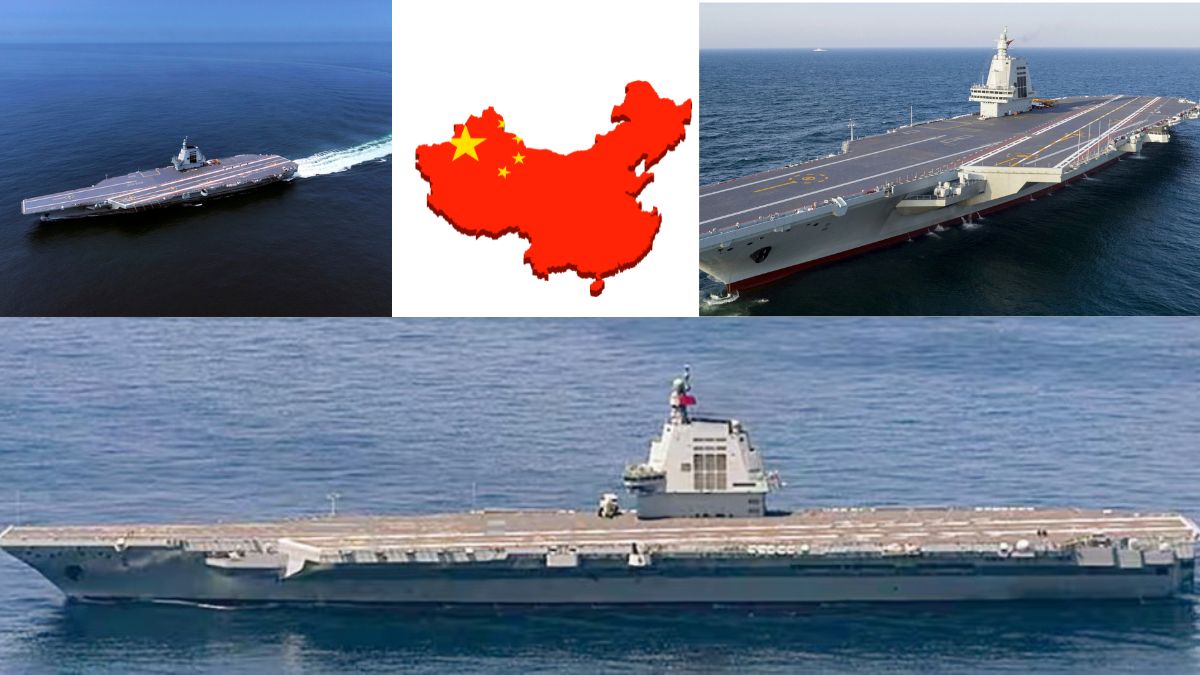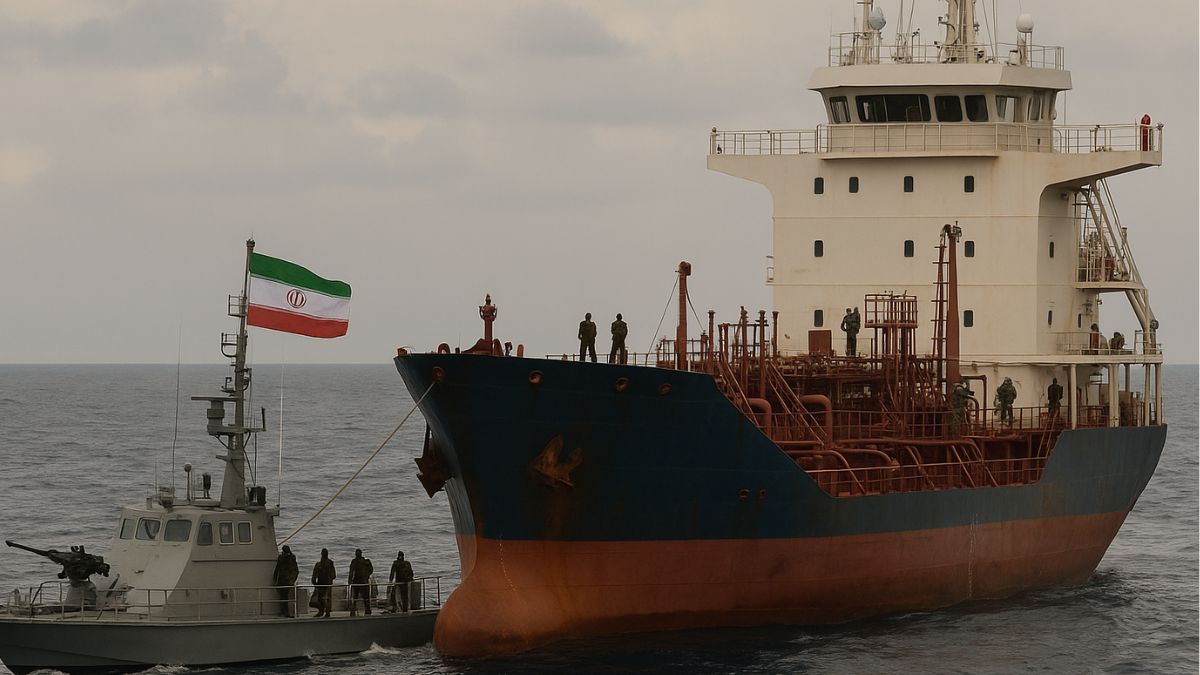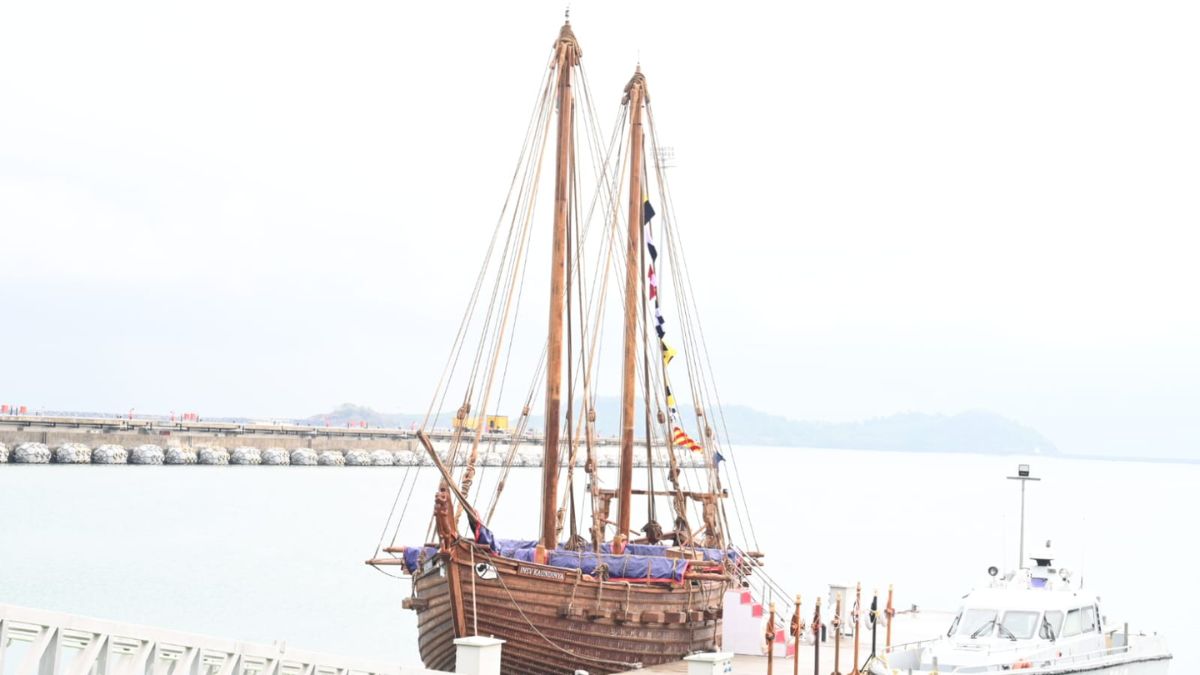China’s Fujian Aircraft Carrier Sails Through Taiwan Strait as Taipei Boosts Cable Patrols

Beijing’s Fujian carrier makes waves in the Indo Pacific as Taiwan braces for grey zone threats to its vital undersea cables. Image courtesy: RNA
China’s newest and most advanced aircraft carrier, the Fujian, has sailed through the Taiwan Strait for the first time, the Chinese navy confirmed on September 12, 2025. The strategic waterway separates China from Taiwan, the self-governing island that Beijing claims as its territory and insists must eventually come under its control.
The carrier, currently undergoing sea trials ahead of its commissioning, was en route to the South China Sea for training and scientific experiments, according to a brief statement released on social media.
Chinese state media stressed that the transit was not aimed at any other country, framing the Taiwan Strait as the “most reasonable and efficient route” for the warship.
The voyage comes at a time of heightened regional tensions. Just last week, China accused the Canadian frigate Quebec and the Australian destroyer Brisbane of “provocative actions” after they too sailed through the strait.
The US Navy, alongside its allies, routinely conducts such passages as a warning against Beijing’s ambitions to use force to establish sovereignty over Taiwan.
Has Fujian neared commissioning?
The Fujian is China’s third aircraft carrier, following the Liaoning and the Shandong. It has undergone nine sea trials since May 2024, fueling speculation that it will soon be commissioned. Analysts quoted in the state-owned Global Times suggest the induction could happen by the end of 2025, echoing the pattern set when the Shandong was commissioned a month after its first Taiwan Strait passage in 2019.
On September 11, Japan’s military spotted the Fujian sailing with two guided-missile destroyers southwest of the disputed Senkaku/Diaoyu Islands, an area claimed by both Tokyo and Beijing. The presence of the carrier group so close to contested territory underlined China’s growing naval reach in the Indo-Pacific.
What is Taiwan’s grey-zone challenge?
As China flexes its naval muscle, Taiwan faces a different but equally pressing challenge: the threat to its undersea communications cables.
The cables are vital for internet connectivity and global communication, but Taiwan says they have increasingly become targets of Beijing’s so-called grey-zone warfare, tactics designed to exhaust Taipei’s resources without triggering outright war.
In February, a Chinese-crewed vessel was implicated in the deliberate severing of TP3, one of Taiwan’s 24 undersea cables. Since then, Taipei’s coast guard has intensified patrols around key cable routes.
“We are stepping up patrols in this area, monitoring for any vessels engaging in disruptive or destructive activities,” said Captain Juan Chung-ching, who leads patrol missions near TP3.
The task has stretched Taiwan’s already thin resources. With only eight boats and about 500 officers assigned to the region, the coast guard must juggle cable protection with life-saving missions and maritime law enforcement. Authorities are currently tracking nearly 500 China-linked vessels, including 96 on a blacklist for suspected involvement in sabotage.
What are the global concerns over undersea sabotage?
Taiwan’s concerns mirror wider global anxieties. Since Russia began the Ukraine war in 2022, the Baltic Sea region has seen suspected acts of sabotage targeting energy pipelines and undersea cables. Analysts warn that Taiwan, with its dense network of cables and proximity to China, is among the most vulnerable states in the world.
Deputy Secretary-General of Taiwan’s National Security Council, Lin Fei-fan, noted: “We are indeed very close to China, and many submarine cable areas are highly vulnerable to damage.” Taipei is now sharing intelligence with allies to track suspicious vessels in real-time, underscoring how maritime grey-zone tactics are becoming a central front in the cross-strait contest.
What is the strategic message from these developments?
The Fujian’s passage through the Taiwan Strait, coinciding with Taiwan’s stepped-up cable defences, highlights the dual dimensions of Beijing’s strategy: overt shows of military strength and covert grey-zone operations.
For Washington, Tokyo, and other regional stakeholders, both developments reinforce the delicate balance of deterrence in one of the world’s most contested waterways.







